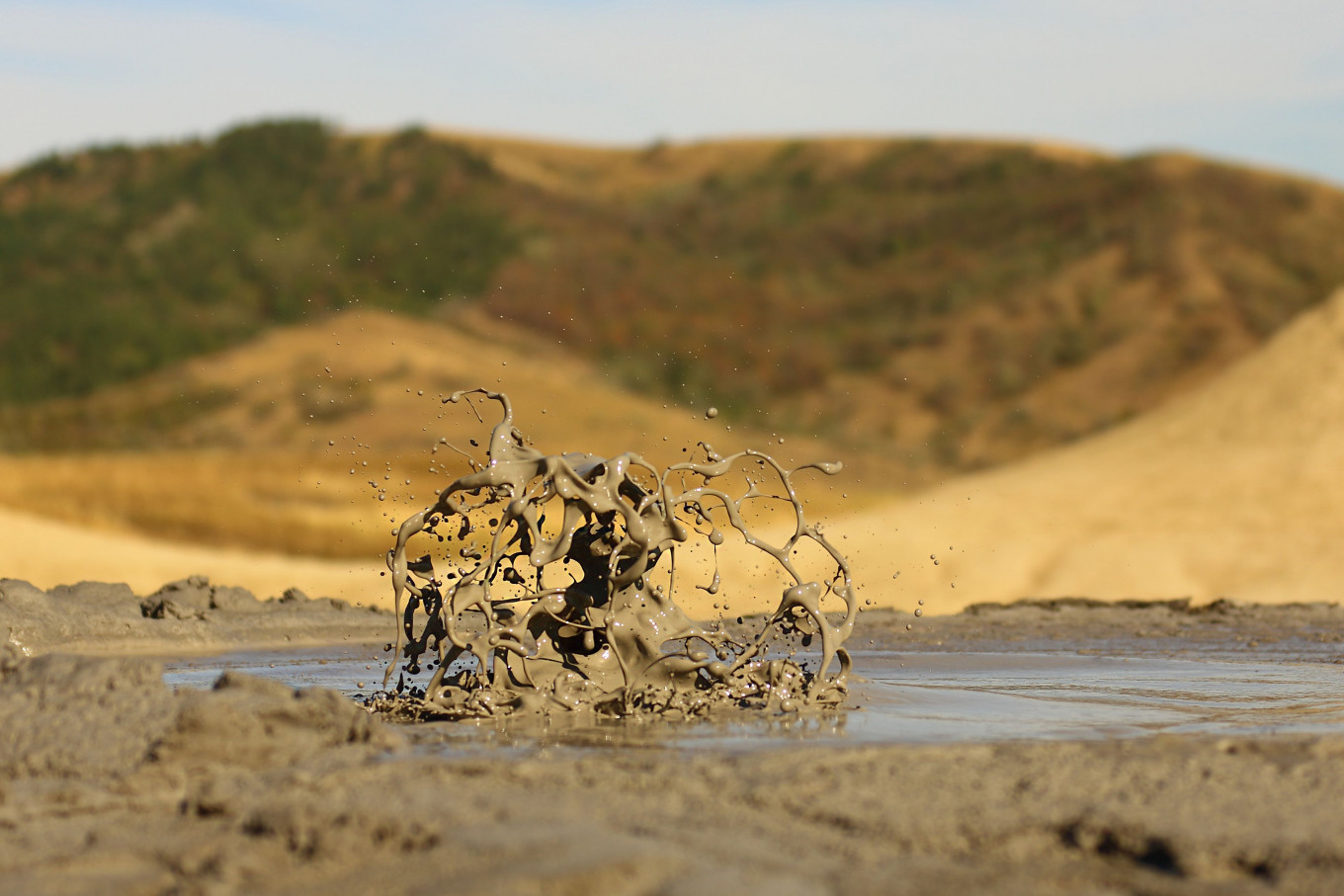Popular Reads
Top Results
Can't find what you're looking for?
View all search resultsPopular Reads
Top Results
Can't find what you're looking for?
View all search resultsMud eruption in Blora poisons four residents, buries 19 buffaloes
Four residents were poisoned after inhaling gas from the eruption.
Change text size
Gift Premium Articles
to Anyone
A
hot mud crater managed by the Randublatung forest management unit (KPH) at the Padas forest management resort (RPH) in Gabusan village, Central Java, erupted on Thursday morning.
Gabusan village supervisory non-commissioned officer Chief Sgt. Jatmiko said four villagers were poisoned after inhaling gas from the eruption as they were herding buffaloes nearby.
“Four residents, namely Marno, Sukimin, Kadis and Warino, were suspected of suffering from gas poisoning and were rushed to the nearest Puskesmas [community health center],” Jatmiko said on Thursday as quoted by kompas.com.
As many as 19 buffaloes belonging to residents were reportedly buried in the mud, he added.
Gabusan village head Parsidi said the mud eruption occurred at around 5:30 a.m. with a deafening boom.
“This one had the highest burst, reaching a dozen meters, and it was loud,” Parsidi said.
RPH Padas forestry police member Agus Rimbawanto said the eruption reached a radius of up to 1 kilometer, which was unusual for the area as it was used to experiencing small eruptions.
“So, from morning to noon, it was still gushing and many residents were scared,” Agus said.
Resident Supriyanto, 36, said that unlike past cases, the vibrations from the mud eruption this time reached the surface and the settlements.
“We were shocked that the [eruption] was this strong,” he said. “Only one buffalo has been found safe.”
Read also: Drilling, not quake, caused Sidoarjo mud volcano: Paper
Kandeng Selatan Energy and Mineral Resources Agency head Teguh Yudi Pristiyanto suspected that the Blora incident was a mud volcano, with a burst of mud mixed with poisonous gases.
“Residents were poisoned by inhaling gas. This phenomenon occurs naturally, not just as a result of well drilling,” Teguh said.
According to Teguh, a similar phenomenon occurred in 2013 at the same location, where a mud volcano expelled liquids such as hydrocarbons and gases such as methane.
The Indonesian Association of Geologists’ East Java chairman, Handoko Teguh Wibowo, echoed Teguh’s statement, saying that the eruption was a mud volcano.
“This shows the emergence of mud volcanoes. The mud has a composition of gases, water and solids,” said Handoko, who is also a geology and mining engineering lecturer at the Adhitama Institute of Technology in Surabaya, East Java.
Unlike in a volcano that emits magma, the temperature of materials resulting from a mud volcano is lower. The materials released are fine grains suspended in a liquid. The gas produced is generally methane, with a small amount of carbon dioxide and nitrogen.
In Indonesia, mud volcano eruptions have occurred in Sidoarjo, East Java, which is still frequently discussed, as well as in Blora, Grobogan and Rembang regencies in Central Java and in several areas in East Java.
Handoko said the mud volcano in Blora was characteristically different from that in Sidoarjo.
“The Sidoarjo mud volcano had a temperature of 100 degrees Celsius. This one reached 30 to 32 degrees,” he said. (syk)










